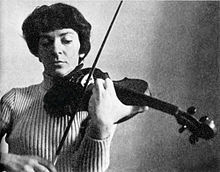Langues et Lueurs
Le metteur en scène Jean-Paul Delore, entouré du clarinettiste Louis Sclavis et du contrebassiste Sébastien Boisseau, déclame ici avec force et énergie des poèmes de Sony Labou Tansi, Henri Michaux, Dieudonné Niangouna, Dambudzo Marechera et Mia Couto. Paru sur le label Yolk, le résultat est énergisant tant par le choix des textes que par l'interprétation des 3 complices.
Recommandable!
Guy Debord advocated drifting in order to reconsider the way we live in a space. Director, author and actor Jean-Paul Delore has embarked on a similar drift. In this recital, he presents texts by French and African authors chosen at random from his repeated trips to Africa. This powerful show, at the frontier of genres, is both escapist and indignant, thanks to the incredible presence of Jean-Paul Delore and the devastating play by two giants of their instrument.
***
Pour le moins intrigantes, Traces, ces 24 courtes compositions en forme d’un collage surréaliste, utilisant diverses sortes de sons, bruits, extraits de films, matières organiques et fragments d’électronique, sont le fruit du graphiste Filax Staël et d’un certain Okko Perekki pour Aagoo Records and REV.LAB records.
Aagoo records est un label de New Jersey créé en 2003 qui produit des artistes aussi éclectiques que Colin Stetson, Philippe Petit, Xiu Xiu, KK Null ou Murcof, entre autres.
Traces as a journey of recorded thoughts, experiences, conversations, images, sounds and nothingness collected, created and composed by Filax Staël, and the intrigant Okko Perekki.24 tracks over a span of about 26 minutes, as an indication of the fleeting and elusive nature of the sound fragments that are contained in Bas Mantel’s cut and paste/remix graphic punk style. Chaos and distropy on the one hand, well ordered and thoughtful on the other.
"A Drift Through Time; Time as a vehicle, non linear, no end or beginning, remixing parallel universes ... with traces of sound, fragmented memories in language and form, audiovisual collaged dimensions in black and white, raw, shape shifting sounds ... Connections of lines; crossing and coalesce, lines as routes analogous to flight maps. These fragments of memories haunt time as the fusion between image and sound, in which they merge together into new forms and meaning. One in which the spectator can experience and to which he can individually give his meaning at that moment in time." Filax Staël
***
Hypnotique!
Le Nakibembe Embaire Group s'est produit en 2020 à Berlin dans la légendaire discothèque Berghain aux côtés du groupe d’avant-garde Gabber Modus Operandi et de et Harsya Wahono, trio basé à Jakarta. Sur leur premier album, ils présentent cinq titres en ensemble et trois titres en collaboration avec le trio indonésien. Leur musique met en relief le remarquable univers polyrythmique propre à Nakibembe, mais aussi des ondulations sonores en corrélation avec des formes plus lointaines, de la musique du gamelan, orchestre bien connu de métallophones indonésiens.
The embaire idiophone is a large* log xylophone used in the small Busoga monarchy of southeastern Uganda. It is very popular in this region, during cultural and social events. It requires the participation of 6 to 8 musicians creating hypnotic polyrhythms while other members add vocals and various percussions to the ensemble.
The Nakibembe Embaire Group performed in Berlin in 2020 at the legendary Berghain nightclub alongside avant-garde group Gabber Modus Operandi and the artist Harsya Wahono. On their first album, they present 5 tracks together and 3 tracks in collaboration with the Indonesian trio. Their music highlights the remarkable polyrhythmic universe specific to Nakibembe, but also undulations of sound in correlation with more distant forms, the music of the gamelan, a well-known orchestra of Indonesian metallophones.
_< 0< I >0 >_






















